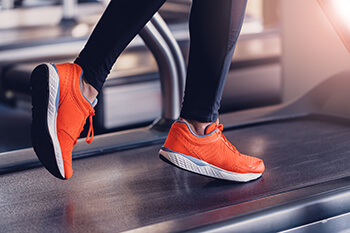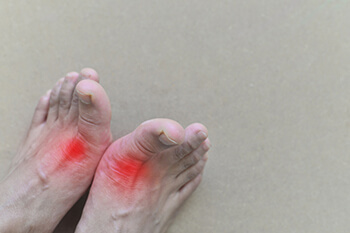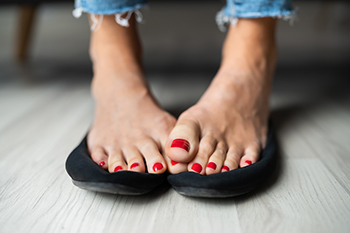
The arch is responsible for several functions in the foot, and may become painful for various reasons. Performing specific stretches may help to relieve any discomfort, and bring overall relief to the entire foot. The plantar fascia is located on the bottom of the foot, and connects the heel to the toes. The arch is often affected if the plantar fascia becomes inflamed, and mild relief may be found when it is frequently stretched. This can be done by sitting in a chair with the affected foot on the other knee. The foot can be grasped in one hand, while holding the foot with the other hand, and pulling the heel back. The plantar fascia can also be stretched while kneeling with the hands and knees on the floor. A gentle stretch can be felt while sitting back on the heels. Many people find relief when they place their foot on a frozen water bottle and roll it back and forth several times. If you would like more information about how to relieve arch and heel pain, it is suggested that you consult with a podiatrist who can provide you with the information you are seeking.
Why Stretching Is Important for Your Feet
Stretching the feet is a great way to prevent injuries. If you have any concerns with your feet consult with the podiatrists from Boston Common Podiatry. Our doctors will assess your condition and provide you with quality foot and ankle treatment.
Stretching the Feet
Stretching the muscles in the foot is an important part in any physical activity. Feet that are tight can lead to less flexibility and make you more prone to injury. One of the most common forms of foot pain, plantar fasciitis, can be stretched out to help ease the pain. Stretching can not only ease pain from plantar fasciitis but also prevent it as well. However, it is important to see a podiatrist first to determine if stretching is right for you. Podiatrists can also recommend other ways to stretch your feet. Once you know whether stretching is right for you, here are some excellent stretches you can do.
- Using a foam roller or any cylindrical object (a water bottle or soda can will do), roll the object under your foot back and forth. You should also exert pressure on the object. Be sure to do this to both feet for a minute. Do this exercise three times each.
- Similar to the previous exercise, take a ball, such as a tennis ball, and roll it under your foot while seated and exert pressure on it.
- Grab a resistance band or towel and take a seat. If you are using a towel, fold it length wise. Next put either one between the ball of your foot and heel and pull with both hands on each side towards you. Hold this for 15 seconds and then switch feet. Do this three times for each foot.
- Finally hold your big toe while crossing one leg over the other. Pull the toe towards you and hold for 15 seconds. Once again do this three times per foot.
It is best to go easy when first stretching your foot and work your way up. If your foot starts hurting, stop exercising to ice and rest the foot. It is advised that you then see a podiatrist for help.
If you have any questions, please feel free to contact our office located in Boston, MA . We offer the newest diagnostic and treatment technologies for all your foot care needs.














